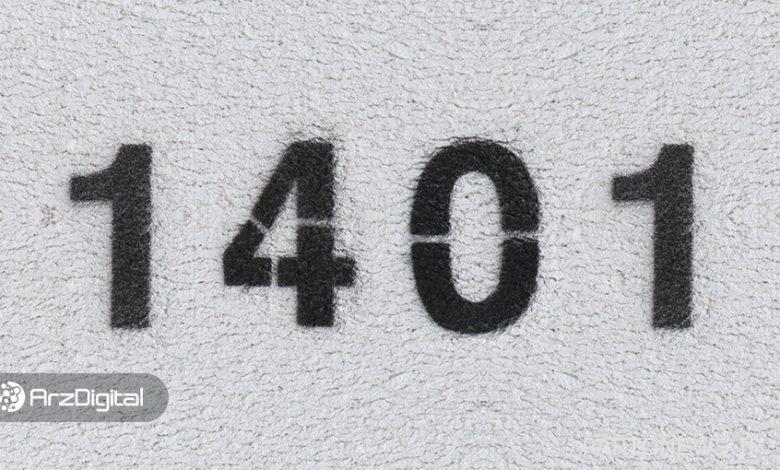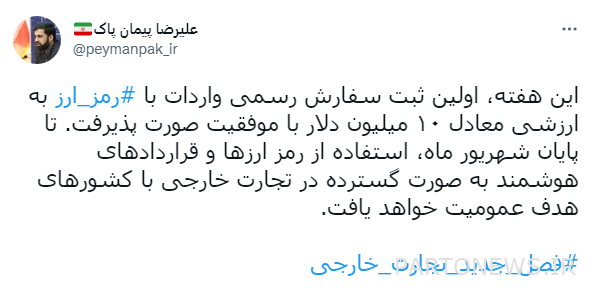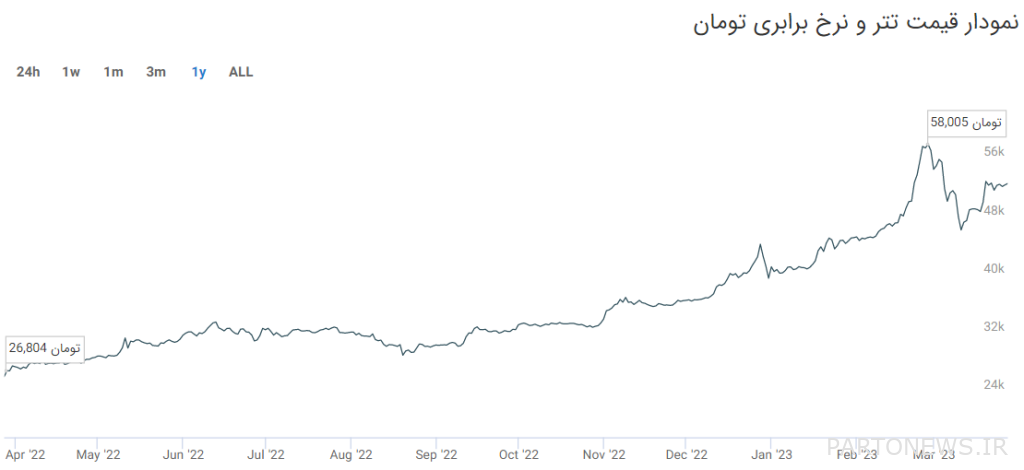The most important events of the year 1401 in the field of digital currencies in Iran; A year full of restrictions

In the past year, there was no shortage of interesting events in the digital currency space of Iran; From stricter regulations to frequent internet outages and restrictions for users and businesses active in this area.
In this article, we review seven important events in the country’s digital currency space that we witnessed in 1401.
1. accepting digital currencies during the World Cup; A program that was never implemented
Since a long time ago, promises were made about hosting the Qatar Football World Cup tourists in parts of Iran, such as Kish Island. Due to the limitations of access to international payment instruments in the country, conditions were supposed to be provided so that the tourists of this event could use digital currencies for their payments in Iran and this gap would be filled in some way.
A member of the Kish hoteliers community said in August 1401 that machines like “ATMs” that have the ability to instantly convert digital currency into Rials are going to be installed on this island and later in other tourist cities of Iran. He even emphasized that “these equipments are ready now and we will announce their installation soon”.
This member of the Kish hotel owners community said:
It was even discussed with the friends of the central bank that ATMs should be opened at the airport so that the tourists arriving in Iran can convert the cryptocurrency into Rials on the spot and at the time of departure, they can convert the remaining Rials into cryptocurrency.
Despite these promises and aside from the rumors and rumors about Kish’s readiness for this hosting, in the days leading up to the Qatar World Cup, the general conditions of the country were such that almost no tourists were willing to stay in Iran even for a short time. As a result, there was no news about ATMs converting digital currency into Rials in Kish, and there was no new talk of accepting digital currencies for foreign tourists.
2. Applying restrictions on rial deposits and withdrawals in exchanges
At the beginning of the summer of 1401, the central bank imposed a limit of 100 million tomans for depositing from payment gateways to Shaba numbers of business users, as a result of which digital currency exchange users were able to withdraw only 100 million tomans from their accounts to a Shaba number every day. and for more withdrawals, they either had to use multiple nights, or they did their withdrawal on several different days.
But this was just the beginning of the transaction restrictions for the users of domestic exchanges, and a little later, in Azar 1401, it was announced that the limit of one-time deposits to domestic digital currency exchanges for each card will be 25 million tomans from now on. At that time, the daily deposit limit for each national code was still 100 million tomans, which means that users of domestic exchanges could deposit a total of 100 million tomans to their accounts in Iranian exchanges with at least 4 transactions of 25 million tomans from 4 different bank cards. Of course, this situation only lasted for a few months.
In January 1401, the Central Bank reduced the deposit limit through the payment gateways of domestic exchanges to 25 million Tomans for each “national code”. This means that individuals could only deposit 25 million Tomans to their accounts in domestic exchanges with one or even several bank cards in one day.
Since then, every Iranian can transact a total of 100 million Tomans in internet payment portals with all their bank cards in one day and night, and the share of digital currency exchanges is a quarter of this amount.
3. Registration of the first official import with digital currencies
From the end of 1400, whispers of the official use of digital currencies for imports were heard until Alireza Peyman Pak, head of the Trade Development Organization and Deputy Minister of Security, unofficially announced on his Twitter page on August 18, the first official order for imports with digital currencies. did

Shortly after announcing this news, Peyman Pak and Ali Saleh Abadi, who was the CEO of the Central Bank of Iran at that time, announced that miners who are legally active can submit their own digital currencies for import. The Tax Administration also announced in December that “crypto-mining centers will be subject to the benefits stipulated in the tax laws and regulations if they export their product and return the resulting currency to the country’s economic cycle based on the Central Bank’s rules.”
The strange thing about the story was that, despite the government officials welcoming the use of digital currencies for imports in the country, Salehabadi, as the head of the Central Bank of Iran, said in a television program three days after the announcement of the first import order with digital currencies that “Purchasing and selling cryptocurrency outside the framework and for exchange and investment is prohibited and not recognized”!
4. The start of digital rial testing
For years, not so clear talks about the national digital currency project of Iran or the digital version of the Rial have been discussed. In the beginning of 1401, however, the head of the central bank announced that the trial phase of the digital rial will begin in the coming months.
Salehabadi said:
In the new year and after the release of “Rial Rial”, the national digital currency of Iran, people can hand over their Rial banknotes to the Central Bank and receive the equivalent of Rial Rial, which cannot be used for investment and will only replace banknotes.
A few months later, in September 1401, the head of the Central Bank of Iran announced that the “pre-testing” phase of the digital rial is one week, which has started with the cooperation of two banks and two stores.
The draft document of the Digital Rial project was first published unofficially in August 1401 and then officially and more fully in November.
Furthermore, Mohammad Reza Farzin, who was elected as the new head of the Central Bank after the resignation of Saleh Abadi, confirmed in the last month of 1401 that “the digital rial is in the experimental phase and the development of this issue will be gradual”.
During the 9th Electronic Banking and Payment Exhibition, Tejarat Bank and Iran Kish introduced the first product based on digital Rial in a limited form and without general release, which is apparently a part of the “Zamard” banking application.
In the last days of the year, Mohammad Reza Maniketa, the head of the Central Bank Payment Systems Department, announced that the trial phase of digital Rial has officially started on March 22, 1401, and from April 20, 1402, banks will be allowed to increase the number of digital Rial users and the extent increase their services in this field.
5. Internet outages and restrictions for users and businesses
A large part of Iranian digital currency traders regularly use international platforms, and since most of these platforms have restrictions on providing services to citizens of our country due to economic sanctions, Iranian users always have to use tools such as “VPN” to hide their addresses. are their real IP.
With the beginning of long-term and frequent internet outages in September 1401, traders as well as businesses active in the field of digital currencies, like other internet users in the country, faced severe restrictions and disruptions.
Although Iranian digital currency exchanges are considered as internal services and were active during the time of internet restrictions, due to the unpredictability of the internet conditions in the country, they mainly requested their users to avoid unnecessary transfers as much as possible and to limit open orders and transaction losses. Manage yourself. Access to international platforms was also affected by internet restrictions much harder than before and the risk of operating in them had increased; Restrictions, a significant part of which have continued until today.
6. Banning exchanges from providing services to foreigners
FATA police published a document in December of last year containing the disciplinary and security requirements for the operation of domestic digital currency exchanges. This document contained controversial points such as the requirement to operate exchanges as a joint venture, the requirement to increase the transaction volume ceiling for new users in steps, and to announce the details of the wallets used by the exchanges to the FATA police.
One of the most controversial parts of it, however, was the prohibition of domestic exchanges from providing services to foreigners. This was while some Iranian exchanges had planned and advertised to attract foreigners, and these people could complete their identity verification process with an Amash card or passport. Naturally, foreign nationals also counted on this issue and were active on these platforms.
Of course, despite this requirement, as it turns out, some domestic exchanges still authenticate foreign nationals.
7. Tether and Kabus record breaking 60 thousand tomans

Tether was bought and sold on the first of April 1401 at a price of 26,000 Tomans in domestic exchanges. On the last day of this year, however, each Tether was worth something equivalent to 52,000 Tomans; It means a 100% growth. Even at a time when the rate of exchange rate rose faster and the market witnessed continuous record breaking of the dollar, the price of Tether exceeded 60,000 Tomans in some domestic exchanges.
In general, the conditions of the exchange rate in 1401, as well as the general situation of the digital currency market, were such that holding Tether was more profitable for Iranians than many other digital currencies that do not have a fixed dollar price.

